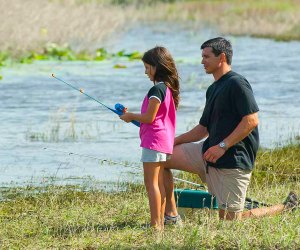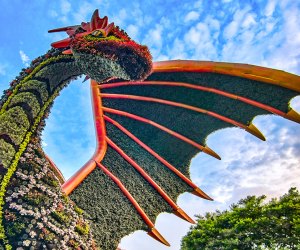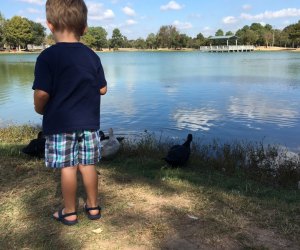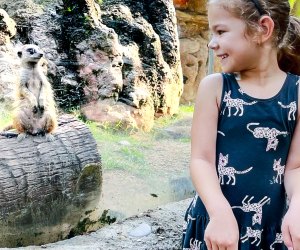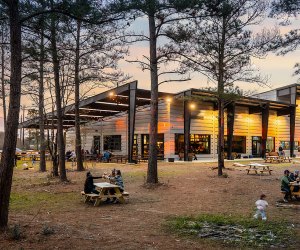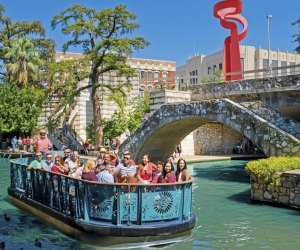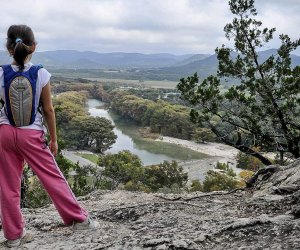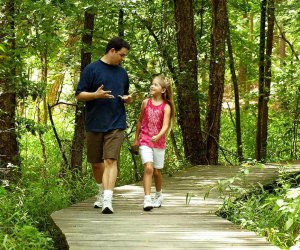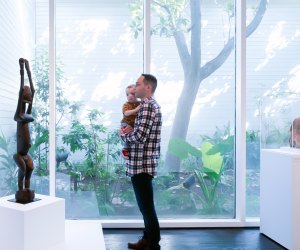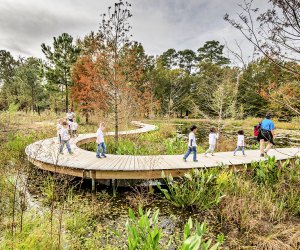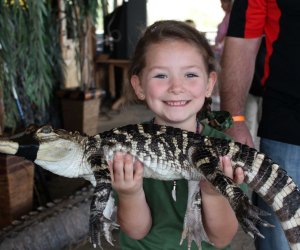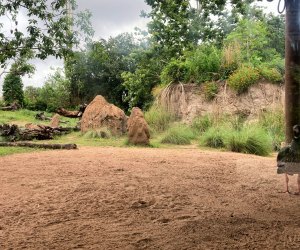A Journey through Houston Zoo’s New South America’s Pantanal with Kids
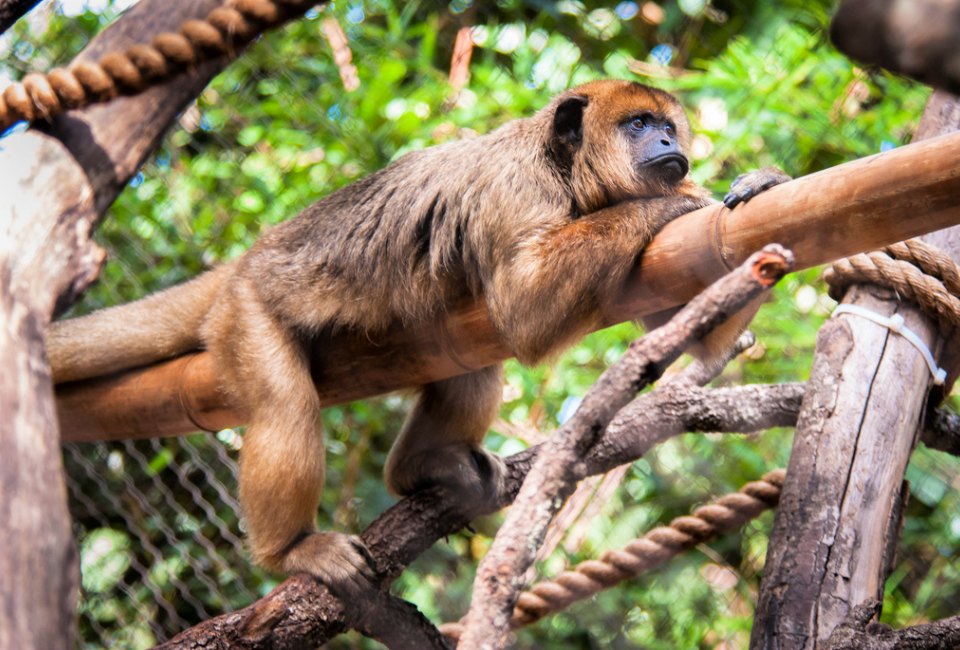
After years of construction, the Houston Zoo has completed its brand-new exhibit: South America’s Pantanal. Among its many pandemic modifications, the zoo has managed to unveil this stunning next phase of its big centennial transformation. The Houston Zoo has always been a family favorite, but there's even more to love now that it has brought Brazil’s tropical wetlands and its inhabitants right to our backyard!
OUR LATEST VIDEOS
What is the Pantanal?
Located in South America, the Pantanal is the largest tropical wetlands in the world. Giant anteaters, giant river otters, and birds of all kinds are among the many diverse animals who live in the Pantanal. The Houston Zoo has created a mini-version of this habitat, offering visitors a chance to view many of the Pantanal’s amazing and unique animals up close.
What is Houston Zoo's Pantanal Exhibit like?
Wide stroller-friendly walkways and abundant natural flora lead visitors towards rustic yellow-painted buildings set on piers. These structures were built to resemble the eco-lodges found along the rivers in the actual Brazilian Pantanal, where tourism dollars support efforts to protect the unique ecosystem.
Visitors follow the well-designed and immersive trail, featuring architecture that evokes the feeling of being on a journey into parts unknown. Along the way, you'll have the chance to encounter some of the most diverse and amazing creatures found in the Pantanal. Colorful identifying markers at every turn help educate visitors on the habitat and the animals they are observing. My kids loved looking at all the beautiful drawings of the animals and reading about them on all the signage.
Though not very big, depending on how long you spend at each animal exhibit, it can take about 30 minutes to walk through.
Exploring the Savannah Aviary. Photo by Vicky Yip
What Animals Can Kids See in the Pantanal?
We saw all kinds of creatures big and small—creatures that crawl, swim, roam, and fly—in the Houston Zoo’s Pantanal. These were some of our favorite stops along the way:
- Monkeys
It was fun to see the black-and-gold howler monkey and the golden lion tamarind climbing, swinging, and playing together up close. - Rare blue-throated macaws
We loved watching these beautiful birds sit together, groom themselves, and fly back and forth. They are so big and colorful! This particular species was thought to have been lost from the wild until it was rediscovered in 1992. - Giant river otters
The otter enclosure lets visitors get right up to the clear acrylic panels to watch the friendly creatures splash and play above and below the water. These five-foot otters seem to be more social later in the day. If you catch them at just the right time, you’ll get a show just watching them frolic with each other and slide down their river slide over and over again. - Jaguars
During our visit, a jaguar was lounging right up against the acrylic panel so that we got a real close-up of its gorgeous spots! - Rhea
These flightless birds look like ostriches but are actually much smaller. Ostriches are found in Africa, but rheas are native to South America. - Savannah Aviary
To enter this enclosed aviary, you’ll have to go through two sets of double doors and a chain link curtain. Birds fly and hop freely around inside so it’s important to keep the entrance and exits secure. The most astonishing thing in here are the long basket-like hanging nests that are built by the oropendola bird. We craned our necks for many minutes to catch one of the oropendolas in action. They dive straight into the nest from the small opening at the top, move around inside the nest as evidenced by the wiggling basket, and then shoot right out of the top again!
Where in the Zoo is the Pantanal Located?
The new Pantanal habitat is on the east side of the Houston Zoo. If you haven’t visited the zoo in a while, be aware that the layout has changed. Some exhibits have been moved, and others may be inaccessible due to on-going construction updating several of the attractions. Pull up a zoo map online to help orient yourself.
After passing through the main entrance and ticketing area, stay to the right of the Reflection Pool. Once you get to the end of the Reflection Pool, veer right and head towards the Texas Wetlands. Walk through the Wetlands and follow the path that leads to the HEB Lone Star Pavilion. The Pantanal entrance is somewhat hidden away, but if you look on your right side across from the Pavilion, you’ll see the sign welcoming you to South America’s Pantanal.
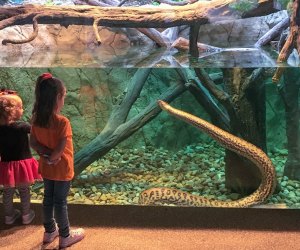
Photo courtesy of Houston Zoo
Tips for Visiting the Pantanal with Kids
- Rest: If the kids get tired while you happen to be in the Pantanal, there are some places to take a break. Though it's not obvious where the seating is located, you can find a place to perch when inside the viewing area for the anteaters and the baird's tapirs.
- Food: When you exit the Pantanal, head north again and you'll see the Cypress Circle Cafe up ahead. Stop there for a snack, drinks, or even a meal. Don't forget that you can now order your food online! This feature is great for saving time and getting food quickly into hungry bellies. Simply check out the menu and put in an order while you're heading to the cafe, so that you can pick up your food without waiting in line.
- Bathrooms: The restrooms and hand sanitizing stations are located on the west side of the Cypress Circle Cafe.
Want To Learn More About South America's Pantanal?
If your kids are interested in learning more about the Houston Zoo's relationship with the Pantanal and the efforts underway to protect the habitat and wildlife, they might enjoy the documentary by KPRC 2 and the Houston Zoo called Saving Wildlife: Giants of the Pantanal.
Giant termite and ant piles. Photo by Vicky Yip
Tickets and Parking
South America’s Pantanal is included in the admission price, but be aware that online reservations for zoo entry are still required. Until further notice, both zoo members and guests must book and purchase tickets online. Reservations are available in 30-minute time slots, but once inside the zoo you can stay for the rest of the day.
Though parking at the zoo is free, it can get tricky during peak season since the parking lot is shared with Hermann Park visitors as well. When traffic is heavy, city police officers make Hermann Park Drive one-way only, often confusing drivers who are trying to turn onto the main road that leads to the zoo. During the weekends, summer, and school breaks, plan for plenty of time to either stake out a spot early in the parking lot, or navigate around any road closures. The zoo website lists some nearby parking garages and other parking suggestions.
What Else Is New at the Zoo?
The Houston Zoo welcomed two new baby elephants born at the McNair Asian Elephant Habitat this year! Baby Winnie was born in March and Baby Teddy was born in May. The two new calves bring the number of elephants in the herd to 13.
Not only is the elephant population growing, but the zoo will be making room for a host of new animals next year; the Galápagos Islands exhibit is coming in 2022! This new attraction will include a state-of-the-art habitat for Humboldt penguins, sea lions, giant tortoises, sharks, and more.

























